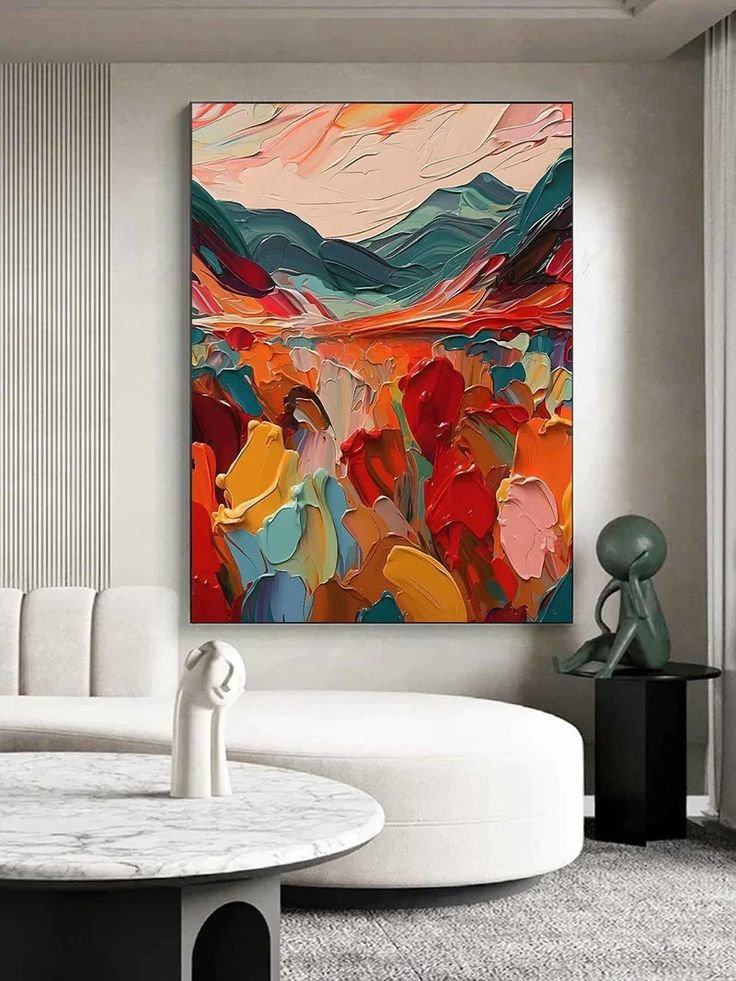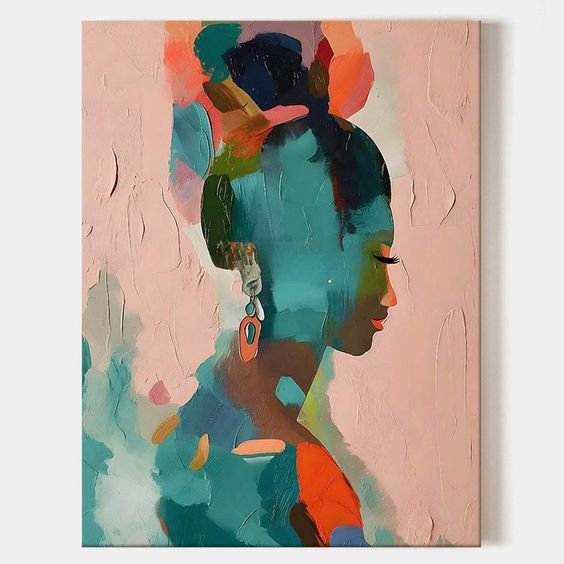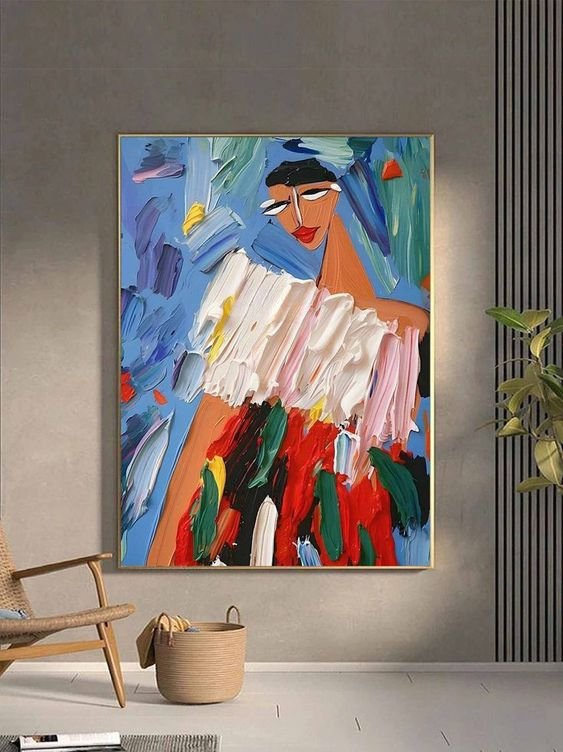The world of oil paintings on canvas stands as a mesmerizing realm, inviting individuals to immerse themselves in an enigmatic allure that captures the imagination and leaves an indelible impression. However, this artistic medium often finds itself shrouded in skepticism, accompanied by a barrage of questions and raised eyebrows.

The seemingly mystical process of blending pigments on an oil base unveils a surprising and fascinating journey, one that transcends conventional perceptions of art. In this exploration, we embark on a quest to peel back the layers, to unravel the intricacies and magic behind oil paintings, dispelling myths and wholeheartedly embracing the undeniable trend that has permeated the very fabric of the art industry.
Oil Paintings on Canvas
Oil paintings, with their illustrious history and enduring allure, represent more than mere brushstrokes on canvas; they encapsulate a profound narrative of human creativity, technical mastery, and cultural significance. This exploration delves into the intricate techniques, from deliberate brushstrokes to textured canvases, unravelling the meticulous craftsmanship that transforms oil paintings into visual poetry.
Beyond the technical, these artworks serve as cultural artifacts, capturing historical moments and reflecting societal nuances. This comprehensive journey invites appreciation for the profound impact oil paintings have had on shaping cultural identities and narratives, unveiling a timeless masterpiece that not only captures the imagination but mirrors the ever-evolving human experience.
1. The Genesis of Canvas Oil Painting
The Origins of Oil as a Medium
Delving into the origins of canvas painting, we uncover the historical evolution of oil as a painting medium. The journey begins with its early applications in ancient civilizations, gradually gaining momentum and sophistication. However, it was during the Renaissance that oil painting on canvas experienced groundbreaking developments, transforming the art world.
Innovations in techniques and materials during this period laid the foundation for the mesmerizing artistry seen on canvases today. This exploration provides a glimpse into the rich history and pivotal moments that shaped oil painting into the revered and captivating medium it has become.
Pioneering Artists and Their Contributions
Examining the works of pioneers such as Van Eyck, Titian, and Rembrandt, we delve into how these artists revolutionized the use of oil in painting. Through meticulous techniques, innovative approaches, and unparalleled contributions, they set the stage for the diverse and captivating world of oil paintings on canvas.
Their mastery not only elevated the medium but also paved the way for future generations of artists to push boundaries and explore the boundless possibilities that oil painting offers. This exploration highlights the transformative impact of these visionaries and their enduring influence on the art of painting with oils.
2. Techniques and Styles in Oil Painting
Brushstrokes and Texture
Unravelling the techniques employed by artists, we delve into the varied brushstrokes and textures that define oil paintings. Examining the bold impasto strokes of Van Gogh and the delicate glazes of Vermeer, we analyse how artists utilize these techniques to convey profound emotion, intricate depth, and compelling narrative in their works.

Each brushstroke becomes a nuanced expression, contributing to the rich tapestry of oil painting, where the artist’s mastery of technique intertwines with their creative vision. This exploration illuminates the artistry behind these methods and the profound impact they have on the visual storytelling within oil paintings on canvas.
Realism to Abstraction: A Spectrum of Styles
Navigating through art movements, we embark on a journey to explore the rich spectrum of styles within oil painting. Traversing from the meticulous and realistic portrayals of the Dutch Masters to the bold and avant-garde expressions of the 20th century, we bear witness to the remarkable versatility of oil as a medium.
Each movement encapsulates a distinct era, reflecting the evolving artistic zeitgeist and pushing the boundaries of what is possible with oil. Whether capturing the essence of everyday life or breaking free into realms of abstraction, oil painting on canvas stands as a dynamic and enduring force, echoing the spirit of artistic innovation throughout the ages.
3. The Significance of Oil Choices
The Chemistry of Pigments and Oils
Embarking on a journey into the chemistry of pigments and oils, we uncover the profound significance of artists’ choices in their creative process. The selection of linseed oil, walnut oil, or poppy seed oil transcends mere preference, intricately influencing crucial aspects such as drying times, color vibrancy, and the overall longevity of the artwork.
As artists navigate this alchemical fusion, each choice becomes a brushstroke in the narrative of their creation, an intentional decision that resonates with the very essence of their artistic vision. In this exploration, we demystify the complexities of oil painting, revealing the thoughtful and deliberate science that underlies every stroke on the canvas.
The ‘Thin to Thick’ Rule and Layering Techniques
Venturing into the technical intricacies of canvas oil painting , we meticulously examine the ‘thin to thick’ rule and unravel the profound impact of layering techniques on the visual richness of the artwork. This section offers invaluable insights into the meticulous craftsmanship that defines the creation of an oil masterpiece.

The deliberate application of this rule, where each layer bears a higher level of coating than the one beneath, becomes a testament to the artist’s skill and their commitment to achieving both aesthetic brilliance and structural integrity. As we peel back the layers of this artistic process, the canvas becomes a narrative of deliberate choices, each stroke building upon the last to construct a masterpiece that transcends time.
4. Indian Oil Paintings: A Tapestry of Culture
Historical Roots and Influences
From ancient canvases adorned with sacred depictions, resonating with spiritual mystique, to vibrant portrayals capturing the pulse of daily life, Indian oil paintings provide a kaleidoscopic panorama of the nation’s artistic heritage. Each stroke of the brush narrates a story, echoing the diversity, traditions, and vibrant hues that characterize India’s cultural mosaic. This exploration is a testament to the timeless allure and artistic legacy woven into the very fabric of Indian oil paintings.
Contemporary Trends and Emerging Artists
Here, traditional techniques seamlessly intertwine with modern perspectives, giving rise to a dynamic and ever-evolving narrative within the realm of Indian art.
These artists, poised on the precipice of innovation, carve out a space where cultural heritage and contemporary vision coalesce on the canvas. In exploring their works, we witness not only the mastery of the brush but also the unfolding of stories that bridge the gap between tradition and the avant-garde, shaping the future trajectory of Indian oil paintings.
5. The Enduring Allure of Oil Paintings
Preservation and Restoration
In navigating the challenges inherent in preserving oil paintings, our exploration delves into the intricate realm of restoration. Here, the delicate equilibrium between maintaining authenticity and ensuring the longevity of these timeless masterpieces unveils intriguing questions about the conservation process.
The meticulous work of art conservators becomes a symphony of skill and dedication, as they strive to breathe new life into aging canvases without compromising the integrity of the original work. As we peer into this nuanced world of restoration, we unravel the complexities involved in safeguarding the essence of oil paintings for future generations, ensuring that the beauty of these masterpieces endures the test of time.
Collecting and Investing in Oil Paintings
Diving into the realm of art enthusiasts and collectors, we embark on a journey through the intricacies of collecting and investing in oil paintings. This section serves as a guide for those with a passion for art, offering insights into understanding market trends and recognizing the potential for appreciation.
6. Looking Forward – Innovations and Future Trends
Technology and Digital Innovations
As technology strides forward, we embark on an exploration of how digital innovations are reshaping the world of oil paintings on canvas. This section delves into the intersection of tradition and modernity, unveiling the impact of virtual exhibitions and AI-assisted art creation on the evolving landscape of art.

From the immersive experiences offered by digital platforms to the collaborative possibilities between artists and artificial intelligence, we navigate the dynamic synergy between age-old artistic traditions and cutting-edge technologies. The exploration sheds light on the transformative journey of oil paintings in the digital era, where the pixels meet the palette, creating a unique fusion of art and innovation.
7. Unlocking the Advantages of Oil on Canvas Art:
In the realm of artistic expression, canvas oil paintings stands out for its myriad advantages, making it a preferred medium for artists across generations. Let’s delve into the key benefits that set this artistic form apart:
Versatility: The inherent blending and layering possibilities of oil provide artists with a versatile toolkit. Controlling drying times enables the creation of a diverse range of effects, from subtle nuances to bold strokes, enhancing the artist’s creative freedom.
Longevity: Noteworthy for their durability, oil paintings require minimal care and maintenance compared to other art forms. The medium’s inherent ability to retain its stunning appearance ensures that the visual impact remains vivid year after year.
Durability: The robustness of oil on canvas ensures longevity, creating surfaces that withstand the passage of time without succumbing to cracks or fading. This durability allows artworks to become timeless pieces appreciated by subsequent generations.
Richness of Color: One of the hallmarks of oil paintings is their ability to offer an unparalleled richness of color. Artists can craft deep, vibrant hues that capture attention or subtle gradients that add layers of depth and texture to their pieces.
Texture Versatility: Oils open up a world of possibilities for artists seeking varied textures and layering in their works. This versatility allows for experimentation, enabling artists to develop one-of-a-kind pieces that engage both the visual and tactile senses.
Oil on canvas emerges as a timeless and versatile medium, providing artists with the tools to create enduring and remarkable works of art. Its durability, versatility, richness of color, texture possibilities, and long-lasting vibrancy contribute to its enduring popularity in the ever-evolving landscape of artistic expression.
Emerging Artists and Global Perspectives
With each stroke, the canvas becomes a testament to the ever-evolving dialogue between creativity and the rich tapestry of human experience, promising a future where the world continues to be entranced by the captivating allure of contemporary oil painting.

This in-depth exploration aims to unravel the layers of creativity, technique, and cultural significance that define the world of oil paintings on canvas. From its historical roots to contemporary expressions, oil painting remains a captivating and enduring art form that continues to leave an indelible mark on the canvas of human imagination.





